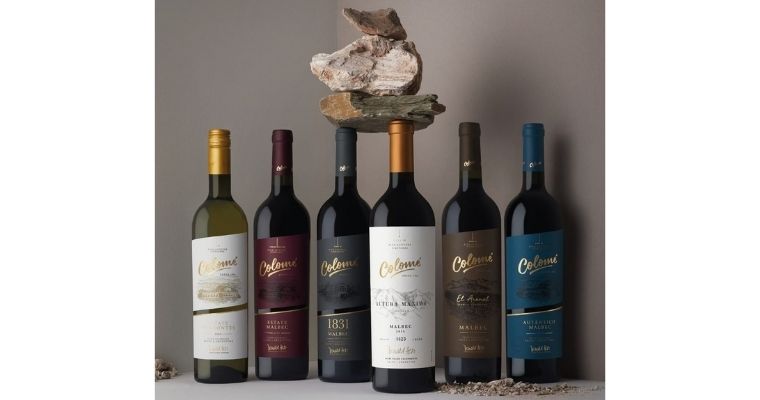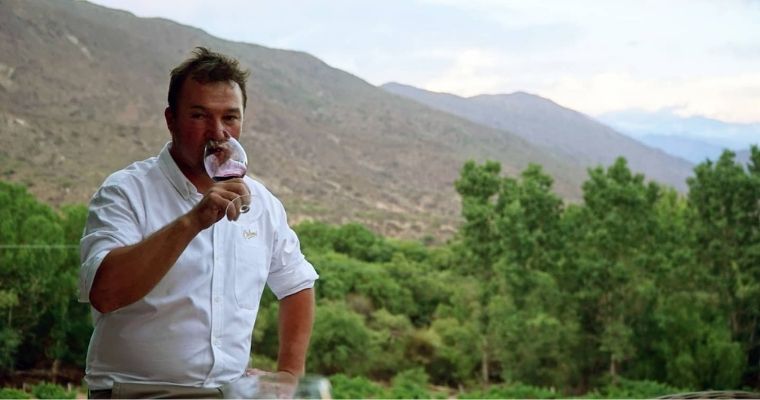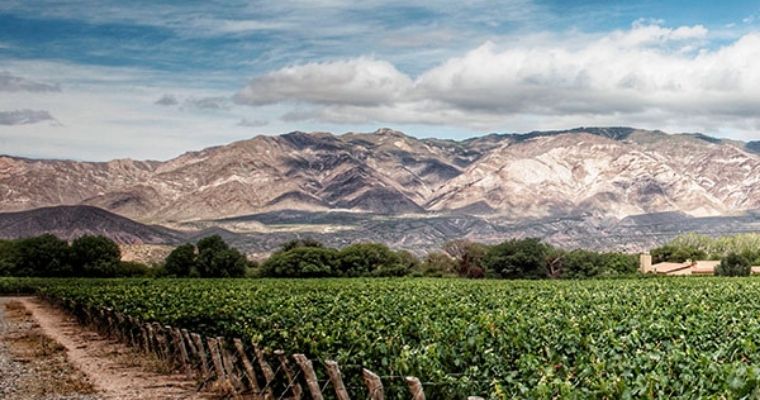Winner Announcement
June 10, 2025
Judging Date
May 18, 2026
Registration Opens
August 1, 2025

Bourgogne-born Thibaut Delmotte is the winemaker at Bodega Colomé, one of the oldest continuously run wineries located in one of the highest altitudes at around 10,207 ft. above sea level. From having a dream to become a wildlife photographer to making one of the finest wines in Argentina, Delmotte has gone through many different phases in his life. With the desire to learn more about wines and winemaking, he completed his studies in Burgundy and worked in various wineries in France before moving to Argentina in 2004. Sitting in the Calchaquí Valley, Colomé is not just a vineyard but a combination of art, culture, adventure, travel, gastronomy, and hospitality. It has been among the World's 50 Best Vineyards and it is a perfect hideaway from the usual world, offering amazing wines and an everlasting experience.
[[relatedPurchasesItems-32]]
I am 44 years old and I am from Bourgogne, France. I worked for 3 years in Bourgogne and 3 years in Bordeaux, before moving to Argentina in 2004.
In 2005 I started as the second winemaker in Colomé and since 2006 I am the main winemaker of the Company.
There is no typical workday in Colomé!
Imagine that we are a 4 hour drive away from the city, mostly gravel road. And we have 4 different vineyards at 4 different altitudes (1700, 2300, 2600, and 3111 meters) separated by more than 150km.
Even if I am not in charge of the vineyard, I try to spend a lot of time visiting it, so I spend a lot of time traveling.
During harvest, I have to be in each vineyard at least once a week.
Also, I spend a lot of time tasting wines and working on our blend. Always looking for improving the quality
I try to visit as much as possible other winery, taste other wines, always with the idea of improving and involving myself in my winemaking
I also travel in the market in order to communicate and participate in the development of the brand.
Great fruit makes great wine! So it is very important to choose carefully the varietal adapted to the place, to understand the characteristic of the terroir.
Every step of the growing process deserves all our attention and harvest date is especially critical. We look for freshness and concentration in our wine but no green or Jamy character so we can’t pick too soon or too late!
In the winery, our job is to maintain the quality of the fruit from the harvest to the bottling.
During fermentation, we work with natural yeast in order to respect the terroir, moderate temperature, and gentle pumping over so we don’t over-extract tannins.
And we choose very carefully our coopers and aging time so the oak gives complexity to the wine but it does not dominate it.

Colomé Wines
Source: Instagram / Bodega Colomé
They are very important in the development of the brand because they represent us where we can’t be present every day.
Our place is so particular (one of the highest vineyards in the world), and so rich in history (the oldest winery inactivity in Argentina) that it is very important that the people who will sell our wines have to come to visit us in order to understand the complexity and diversity of our terroirs and wines.
So for them, it is easier to communicate our brand.
Also, we try to visit them as much as possible so we can communicate with the consumer.
We have 2 different ways of DTC:
- The Visitor Center and the hotel of Colomé, located in the winery. But since we are far away and difficult to access, we have around 8.000 visitors per year.
- The online sales, at Cava Colome where we can sell wines online all around the country. For this channel, we try to offer exclusive wines that you can’t find in a regular wine shop.
In terms of fruit sourcing, it is 100% Estate fruit. So we can manage and control all the steps of the production and obtain better quality
In terms of enological and dry sourcing, they are mostly imported. We have a quality control department who control and test every dry good that we are buying
Every year we do some new trials.
We bought some concrete eggs for fermentation and aging. In general, it gives us an interesting component for blending, bringing bright fruit and freshness to the wine.
Our last big inversion is an optical sorting table, which is one of the best innovations in the wine industry. It allows us to ferment super clean fruit, almost perfect.
One of the problems we had in the past is that we always have a raisin in the crop, even with a good point of ripeness. Those raisins give over-ripe characters and also release sugar which increases the alcohol or even provokes stuck fermentation.
Now, with the optical sorting, we eliminate the raisin and we obtain much purer and brighter fruit, freshness, and no more stuck fermentation.

Thibaut Delmotte at the Calchaquí Valley
Source: Instagram / Bodega Colomé
We are now certifying our company as sustainable.
We have very healthy weather on our farms, so we don't have to use any agrochemicals.
In the winery, we work as much as possible with natural yeast and low intervention, low sulfites.
But the most important thing for us is to save all the water we can. So we are taking a great care of it
Colomé is a very particular place, like I said before we have 4 farms distributed in all Valle Calchaqui, so the logistics are difficult for controlling and managing those places.
Of course, those 4 farms have different terroir, so it is very important to take the time to make different trials in order to understand each terroir.
I believe that for being successful as a winemaker, you have to be humble and adapt yourself to the place, to the terroir.
The winemaker, and also the vineyard manager, can share his technical knowledge and be more precise and accurate in the description of each step of the process of making wine.
The consumer is always more interested and passionate about wine, with a big desire to learn more about the details of winemaking.
So that’s very important for us to participate in sales and marketing.

Beautiful view at Bodega Colomé
Source: Bodega Colomé
Like I said before, the key is to adapt to the place.
My last experience in France was in Bordeaux, where one of the challenges was the color: we have to make a lot of extraction (3-4 pumping over per day, fermentation at high temperature) in order to have good color.
I did the same at Colomé for my harvest, but I extracted mostly dry tannins and the wine was tannic!
At those altitudes (1700, 2300, 2600, and 3111 meters) we have more ultraviolet radiation, and the fruit is protecting itself from that UV producing thicker and darker skin. Which gives color and structure to the wine.
We have excellent fruit that gives us a lot of color and concentration without over extracting.
Also, the big thermal amplitude between day and night helps us to keep a great natural freshness.
That’s great to produce high-quality wine with low intervention. It is a very generous terroir!
In terms of wine drinking culture, Argentina and France are quite similar: the consumption of wine per capita is high (more than 25 liters), drinking better quality wine. Mostly with food.
Also, like France, Argentina is consuming mostly national wines.
In Argentina, it is very difficult to find imported wine!
I like to have wines from all around the country. From the different terroirs of Mendoza, Patagonia, etc…
If I have the opportunity to have an imported wine I will look for Beaujolais or Bourgogne.
Header image source: Bodega Colomé
Interviewed By Tushar Anand, Junior Writer, Beverage Trade Network
Enter your Wines now and get in front of top Sommeliers, Wine Directors, and On-Premise Wine Buyers of USA.
